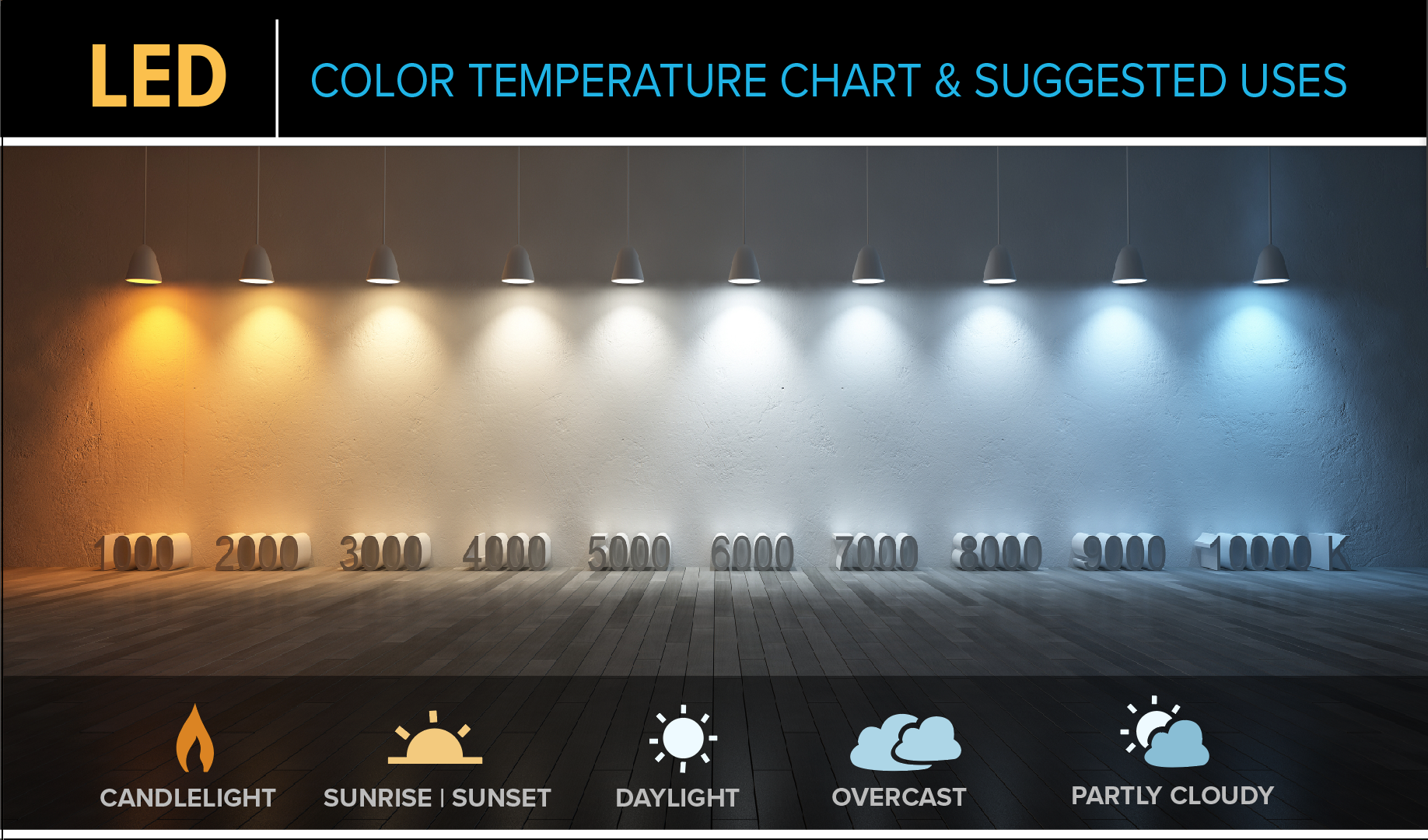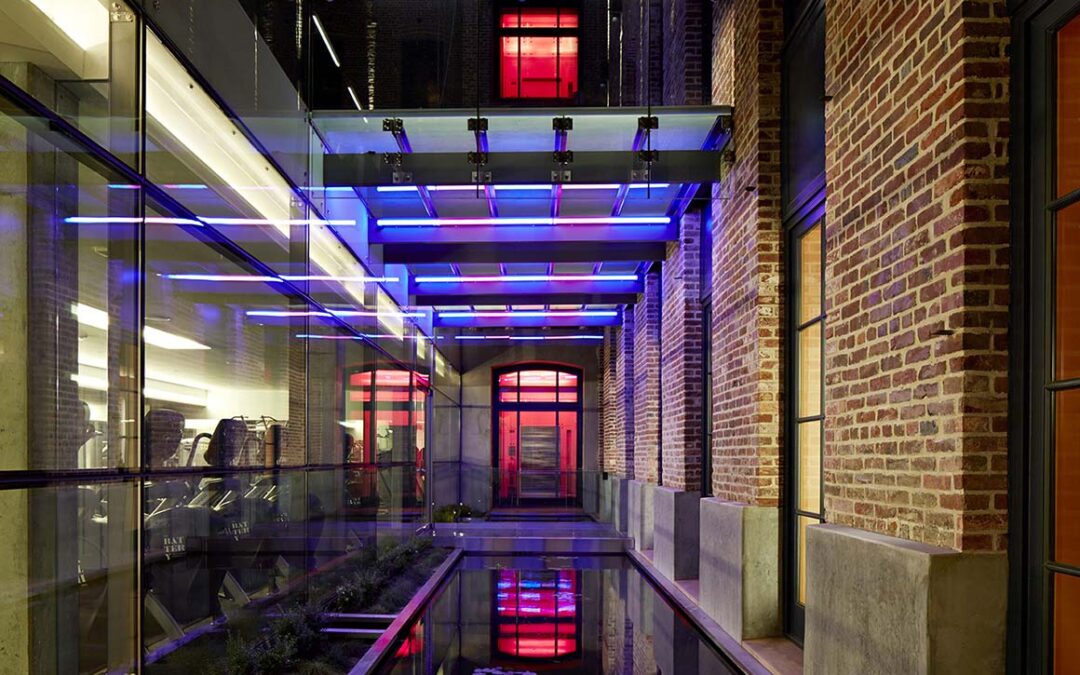Having the correct lighting in the workplace is critical for maintaining happy, healthy and productive employees. Lighting has the power to greatly affect the atmosphere of a space and has a direct impact on mental clarity, motivation and the well being of the people who inhabit the space.
However, most office buildings lack the crucial exposure to natural daylight that humans need in order to thrive. The old-fashioned solution has been to install overhead fluorescents that illuminate the space and keep employees awake. Unfortunately, fluorescent lighting often causes eye strain and headaches, decreasing productivity and the well being of occupants. Luckily, LED lighting has become increasingly popular and more affordable than ever – and they come in a variety of color temperatures, styles and can e
-ven change colors. Before we get into LED styles, let’s explore the differences between light temperatures.
“People who work in windowless environments on average get 46 minutes less sleep on work nights, experience lower-quality rest, and are less physically active during the workday than colleagues who are afforded adequate exposure.”
LED Light Temperatures
Light temperature is measured in degrees Kelvin. The lower the temperature the warmer the light and the higher the temperature the cooler it is.

Download our printable guide here. When choosing led lights for your commercial space it’s important to pick an appropriate color temperature for the intended use of the space. Warm light is inviting and relaxing, often used in restaurants, meeting rooms and hotel lobby’s where the goal is to make people feel relaxed and comfortable.
Cool light keeps people alert, increases productivity and reduces fatigue. Cool light is most often used for offices, warehouses, hospitals and other places where the goal is to keep people mentally sharp and productive.
Researchers at the University of Greenwich found in a two-month study that workers under “blue-enriched light bulbs” reported feeling “happier, more alert and had less eye strain.
Effectively using LED’s to enhance an environment.
There are three main types of lighting, and by effectively combining them you can create an aesthetically comfortable interior environment. The three types of lighting are:
1. General lighting (also known as ambient light) – this is the main lighting of the space. In most commercial environments its is best to use a neutral white light as the main source of lighting. However, you may choose to go slightly warm or slightly cool, depending on the main use of the space.
2. Task lighting (local lighting) – this lighting is used to light work areas where specific tasks are being performed. Cool blue desk lamps are a great example of task lighting. The cool light helps to keep the mind focused when working on something at your desk, and when layering on top of a neutral ambient light the overall environment is able to remain warm and comfortable.
A good rule of thumb when layering these two types of light is to use general lighting to provide the minimum required light and adjust lighting levels at specific locations using local lighting.
3. Accent or decorative lighting – This type of lighting is used to decorate a space and does not generally provide sufficient light to be used alone. Accent light can be used to highlight artwork on the wall, as a piece of art of its own or as a border. It is used to add interest to a space, and when used strategically it can really enhance an environment by adding some visual interest.
App-controlled LED’s
Even though it is helpful to match color temps to workplace goals, overall humans perform at their best when their artificial environment matches the patterns of natural light. Cool blue light may be good for sparking creativity and keeping people awake, but too much cool light late in the evening can disrupt sleeping patterns, leaving employees tired and unable to concentrate the next day.
Luckily technology has made it possible to adjust the temperature of the light based on the time of day. App-controlled LED lighting products, such as the Philips Hue, allow you to program your fixtures to mimic the color transformation of the sun in real time. This is a great solution for general lighting, and we highly recommend it.
Getting creative with LED’s
One of the greatest things about LED’s is that they come in a variety of shapes, sizes and fixtures, allowing you to pick ones that best compliment the design and furnishings of your space.
Saving money with LED’s
Perhaps one of the best things about using LEDs in your commercial project is the amount of money you can save on your energy bills. LEDs typically use 25-80% less energy than traditional incandescent bulbs, decreasing overhead and boosting your bottom line.
If you need help deciding which LEDs to use for your commercial (or residential) project, give us a call or send us a message and we will be happy to guide you in the right direction.






